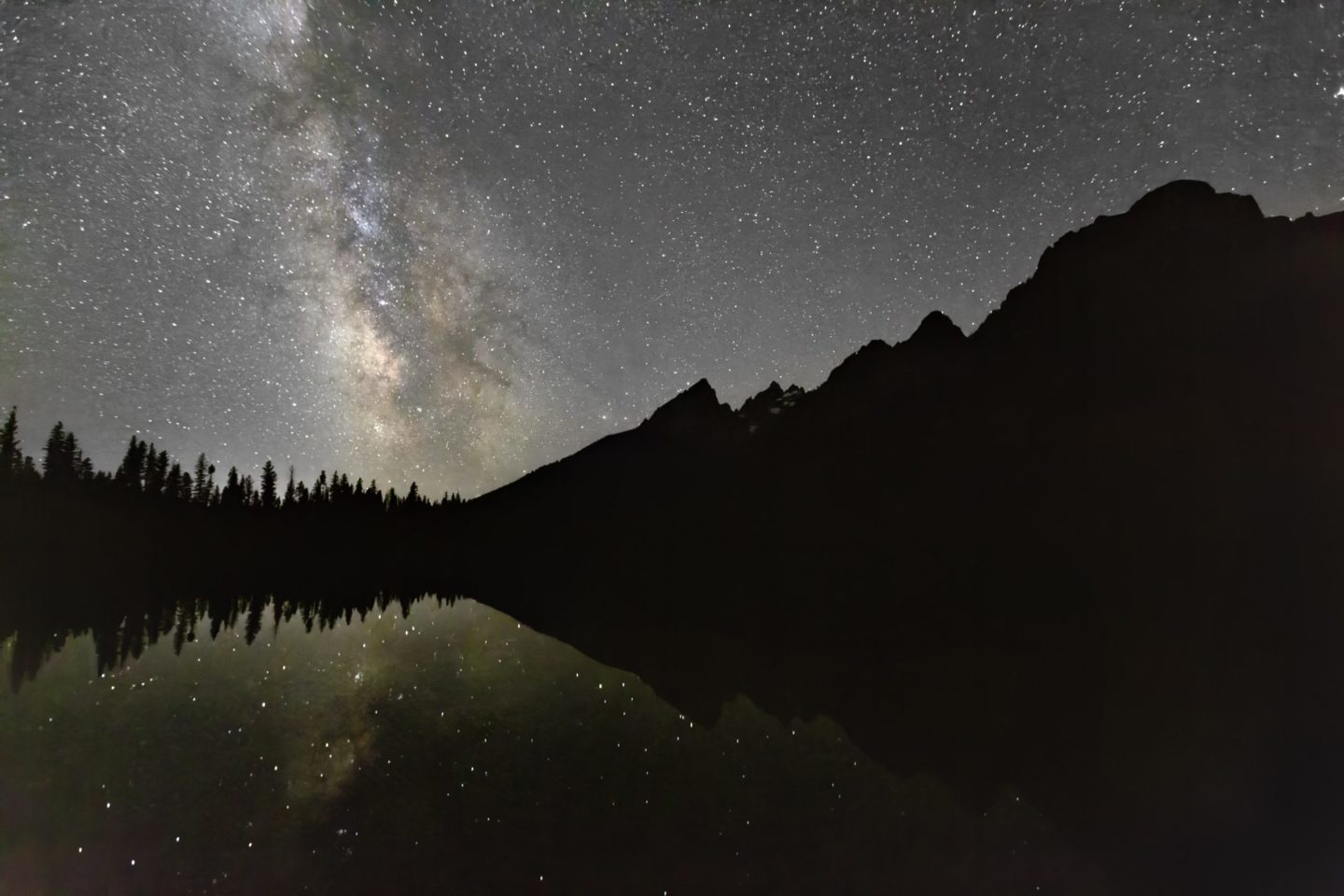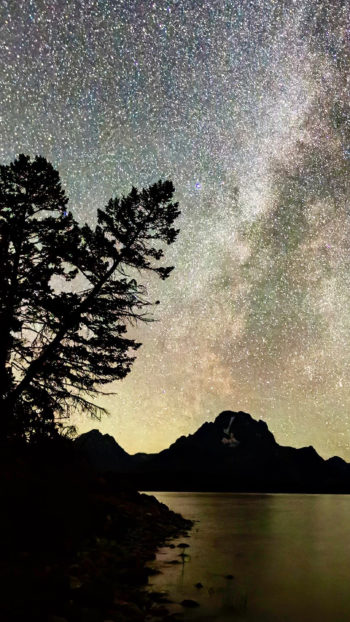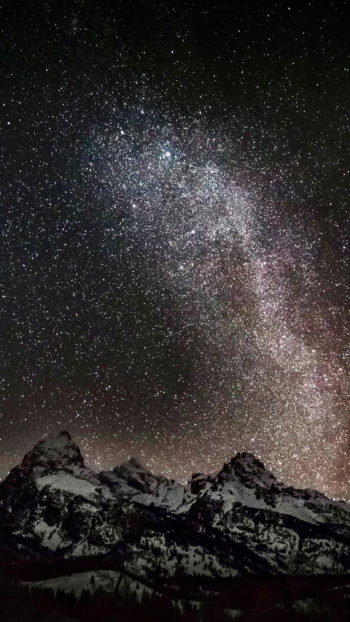Jackson Hole’s dark skies make it one of the best stargazing locations in Wyoming as well as in the entire United States. Thanks to minimal light pollution, high elevation, and dry atmospheric conditions, visitors can experience unparalleled views of the Milky Way, planets, and deep-space objects. But what makes Jackson Hole’s skies so special? This guide explores the science behind its pristine dark skies, what you can see, and the best ways to experience it for yourself.
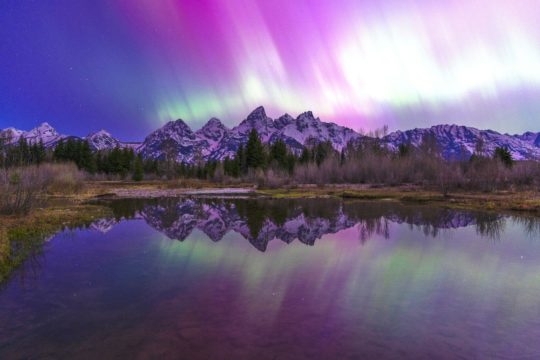

What Makes Jackson Hole’s Skies So Exceptionally Dark?
Why is Jackson Hole good for stargazing? Jackson Hole’s skies are exceptionally dark due to a combination of factors that make it an ideal location and dark sky conservation. Here are the key reasons:
Limited Light Pollution Thanks to Conservation Efforts
This area is home to Grand Teton National Park and other protected wilderness regions. These locations have strict regulations on outdoor lighting, helping to preserve the dark skies. Teton County also advocates for reducing light pollution throughout the area.
High Elevation for Clearer and Crisper Star Viewing
Jackson Hole sits at a relatively high elevation, which means the atmosphere is thinner and traps fewer pollutants than can be found closer to sea level. The atmosphere also has less moisture, which can scatter light, resulting in crisper night sky views. The clearer air at higher altitudes provides excellent visibility for stargazing, allowing for sharper views of stars, planets, and other celestial phenomena.
Dry Climate and Low Humidity for Optimal Stargazing Conditions
The region around Jackson Hole and Gran Teton experiences many clear, dry nights, especially in the fall and winter, which contributes to excellent stargazing conditions. The crisp, dry air allows for less atmospheric interference, providing some of the clearest skies in the United States.
What Can You See in Jackson Hole’s Night Sky?
Jackson Hole’s night sky offers a stunning array of celestial sights, making it a prime location for stargazing. Here’s what you can expect to see:
The Milky Way – A Stunning, Visible Galactic Core
From May to September, the Milky Way stretches across the night sky, offering a breathtaking view of our galaxy’s dense starry core. On moonless nights, it’s visible in its full glory, providing one of the most spectacular stargazing experiences anywhere in the world.
Planets, Moons, and Deep-Space Objects
With help from a high-powered telescope, planets shine in remarkable detail in these dark skies. Depending on the season, you can see stormy Jupiter and its Galilean moons; bright Saturn with its iconic rings; Mars, sometimes even showing visible polar ice caps; and Venus shining brightly at dawn or dusk. When the moon is up, it affords beautiful views of its craters, while deep-sky objects like the Andromeda Galaxy, the Orion Nebula, the Pleiades Cluster, and the Great Cluster in Hercules can sometimes be visible even with the naked eye.
Seasonal Celestial Events – Meteor Showers, Eclipses & More
In summer, the Perseid Meteor Shower in August brings a stunning display of meteors. Winter brings the Geminid Meteor Shower, while occasional lunar eclipses turn the Moon a reddish hue. Solar eclipses provide rare opportunities to see the Moon block the Sun, casting a shadow on Earth. The Milky Way is most visible during the summer months, and planetary oppositions, such as those of Jupiter and Mars, offer incredible views of these distant worlds. The sky changes with the season, and any time of the year brings its own celestial wonders.
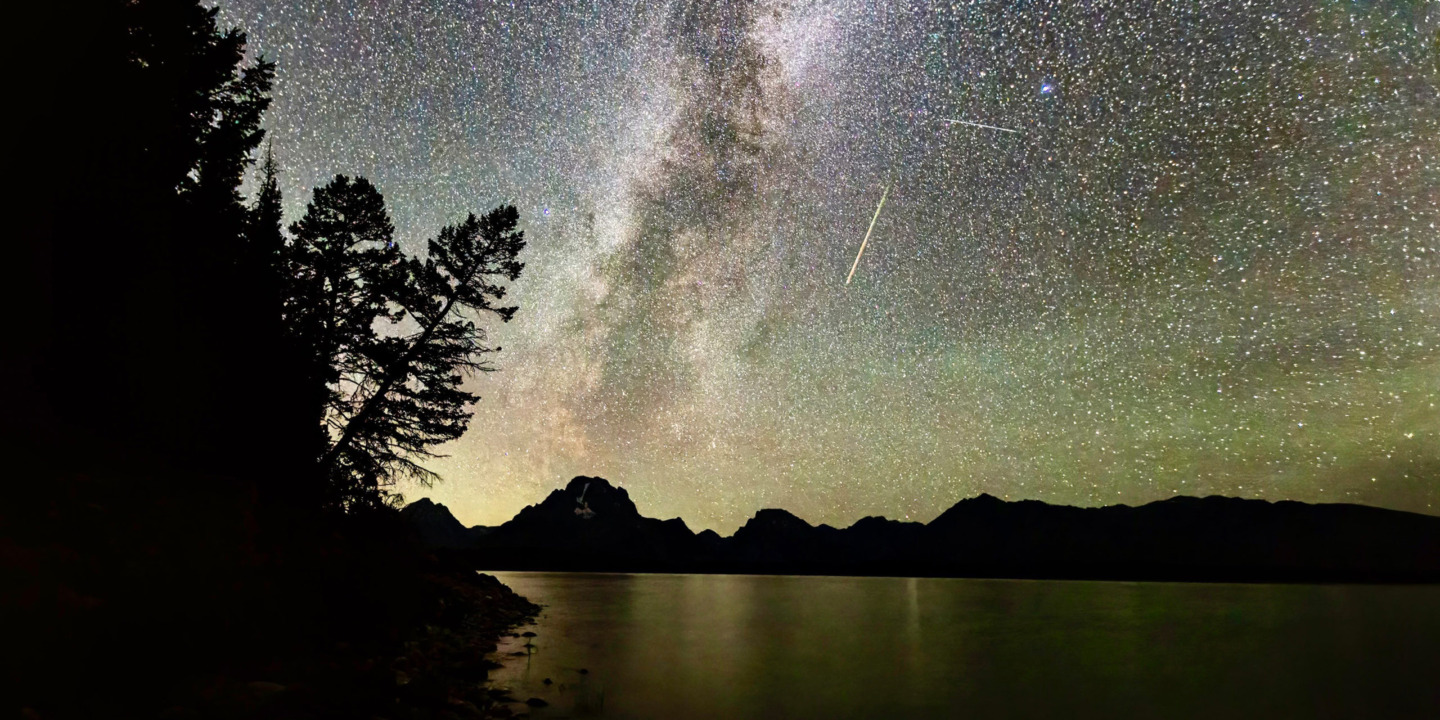
The Science of Light Pollution and Its Impact on Stargazing
Light pollution occurs when artificial light, usually from street lamps, buildings, or other man-made sources, spills into the night sky. This over-illumination overwhelms natural light from celestial bodies, making it difficult to see faint objects like stars, nebulae, and galaxies.
How Artificial Light Diminishes Star Visibility
One of the most immediate effects of light pollution stargazing is the inability to see the stars in the sky. In urban environments, the visibility of stars can drop dramatically due to skyglow. Skyglow is the brightening of the night sky over populated areas, caused by scattered artificial light. It is most noticeable in urban areas and can obscure visibility of stars even when looking away from direct light sources. While in rural or remote areas, you might see thousands of stars with the naked eye, in the middle of a city, the number may dwindle to a handful.
Why Jackson Hole’s Remote Location Offers a Rare Viewing Experience
Jackson Hole, Wyoming, offers exceptional stargazing thanks to its remote location and low light pollution. Surrounded by the Teton and Gros Ventre ranges, it’s home to Grand Teton National Park and Bridger-Teton National Forest, both working towards designation as International Dark Sky Places. This minimizes artificial light, providing clear, unobstructed views of stars, planets, and galaxies. Jackson Hole’s pristine skies make it a rare and ideal spot for stargazing.
The Role of Dark Sky Reserves & Conservation in Astronomy
Understanding the science behind dark skies encourages Dark Sky Reserves and conservation efforts. These play a crucial role in preserving the quality of the night sky for both stargazing and scientific research. These areas are designated for their minimal light pollution, ensuring optimal conditions for observing celestial objects. By limiting artificial lighting and promoting responsible lighting practices, Dark Sky Reserves protect the natural night environment, benefiting astronomers, wildlife, and local communities. Conservation efforts also help raise public awareness about the importance of dark skies, fostering a deeper connection to the cosmos while reducing the impact of light pollution on both human health and the environment.
Best Places in Jackson Hole for an Unobstructed Night Sky View
Jackson Hole offers several spots perfect for unobstructed views of the night sky, thanks to its remote location and low light pollution. Here are some of the best places to stargaze in the area:
Grand Teton National Park – Beautiful Backdrop for Night Sky Experiences
This iconic park, with its towering peaks and vast open spaces, offers breathtaking stargazing opportunities. Within the park, Mormon Row is one of the best Grand Teton stargazing spots. It is famous for its historic barns and wide-open spaces. It’s an ideal spot for unobstructed views of the night sky, with the Teton Range as a dramatic backdrop.
Togwotee Pass – High Elevation & Zero Light Interference
At high elevation with zero light interference, Togwotee Pass offers one of the best stargazing experiences in the area. Its remote location and clear skies make it ideal for seeing distant galaxies, the Milky Way, and meteor showers.
Jenny Lake – A Scenic Spot for Stargazing Reflections
Also within Grand Teton National Park, the Jenny Lake area provides a particularly clear view of the Milky Way with minimal light interference. The calm, clear waters reflect the stars, amplifying the experience.

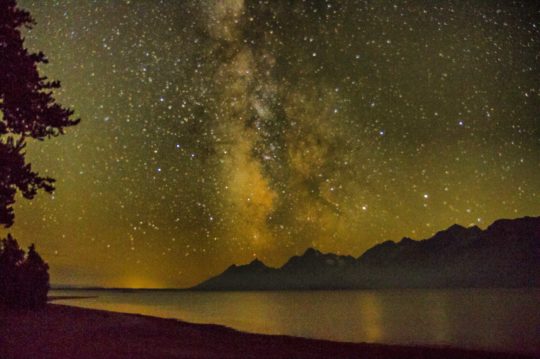
How to Experience Jackson Hole’s Dark Skies on a Guided Tour
Experiencing Jackson Hole’s dark skies on a guided tour is a fantastic way to explore the stars, planets, and constellations with the expertise of a knowledgeable guide. Here’s how a tour can enhance your adventure:
What a Professional Astronomer Can Show You
Guides usually offer in-depth explanations of the night sky, teaching you how to identify constellations, planets, and other celestial phenomena. Many also share local stories or myths associated with the stars, adding a cultural dimension to the experience.
The Benefits of Using High-Powered Telescopes on a Tour
A high-powered telescope allows you to zoom in on faraway celestial objects, such as distant galaxies, star clusters, and nebulae, providing views that are impossible to achieve with the naked eye. With a telescope, you can see craters on the moon, the rings of Saturn, and the bands of Jupiter in stunning detail, as well as distant deep sky objects like the Orion Nebula and the Andromeda Galaxy. Telescopes collect more light than our eyes alone, so they can reveal dimmer stars and objects in the sky. The sharper, brighter views provided by a telescope make the experience more immersive and captivating, especially when observing objects that would otherwise appear as faint smudges or invisible to the naked eye.
How to Enhance Your Night Sky Experience with Apps & Star Maps
Astronomy in Jackson Hole is enhanced with apps and star maps is a great way to make stargazing even more engaging and educational. Whether you’re an experienced astronomer or a beginner, these tools help you identify constellations, track planets, and deepen your understanding of the night sky. SkySafari offers detailed star maps, a vast database of stars, planets, and deep-sky objects, and tools for tracking the movement of celestial bodies in real time. Stellarium is a popular desktop and mobile app, offering a realistic, 3D representation of the night sky. It lets you customize your location, time, and date, so you can plan your stargazing sessions and see exactly what the sky will look like in the future. Many stargazing apps include interactive maps where you can zoom in or out to track celestial objects based on your location. You can also set specific times and dates to plan future observations.
Jackson Hole, Wyoming, stands out as one of the best stargazing locations in the U.S. due to its unique combination of remote location, low light pollution, high elevation, and clear air. When visiting the region, whether it’s for skiing or exploring our national parks, don’t miss the opportunity to experience one of the darkest, clearest skies for stargazing with us!
FAQs
What makes Jackson Hole one of the best places for stargazing?
Jackson Hole offers minimal light pollution, high elevation, and dry air, all of which contribute to exceptionally clear night skies. The lack of major urban areas nearby ensures an unobstructed view of the cosmos, making it a top stargazing destination.
What can I see in Jackson Hole’s night sky?
Depending on the season, you can witness the Milky Way’s bright galactic core, planets like Jupiter and Saturn, meteor showers, and even distant nebulae. The winter months offer crisp views of Orion’s Belt, while summer skies are perfect for seeing dense clusters of stars and the Milky Way.
What is light pollution, and why does it matter for stargazing?
Light pollution is the excessive or misdirected use of artificial light, which creates a glow that obscures stars and celestial objects. Jackson Hole’s commitment to dark sky conservation helps preserve pristine night sky visibility, making it one of the best places for astronomy in the U.S.
Where are the best places to stargaze in Jackson Hole?
Grand Teton National Park is a top choice due to its protected skies and scenic mountain backdrops. Togwotee Pass offers a high-altitude location with minimal interference, while Jenny Lake provides a serene, reflective surface for stunning night photography.
What’s the best way to experience Jackson Hole’s dark skies?
Booking a guided stargazing tour is the best way to experience the full wonder of Jackson Hole’s night skies. Expert guides provide high-powered telescopes, teach you about celestial objects, and lead you to the best dark sky locations for an unforgettable experience.

